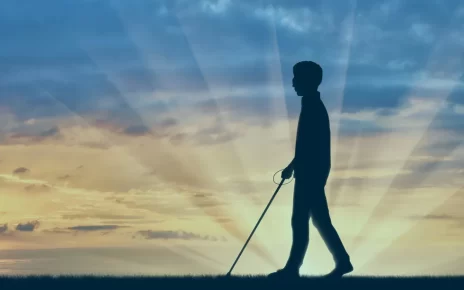Ever notice how scrolling through your phone at night leaves you wired—or how your eyes feel like sandpaper after a long day in front of screens? Yeah, that’s blue light doing its thing. And honestly, it’s a double-edged sword. On one hand, it keeps us alert. On the other? It messes with our sleep and strains our eyes. Let’s break it down.
What Exactly Is Blue Light?
Blue light is part of the visible light spectrum—the kind our eyes can actually see. It’s got a short wavelength, which means it packs a lot of energy. You’ll find it everywhere: sunlight (yep, the original source), LED bulbs, and, of course, the screens we can’t seem to quit.
Here’s the deal: not all blue light is bad. In fact, some exposure during the day helps regulate mood and focus. But like that third cup of coffee, timing matters. Too much, too late? That’s where problems start.
How Blue Light Hijacks Your Sleep
The Circadian Rhythm Connection
Your body runs on a 24-hour internal clock called the circadian rhythm. Light—especially blue light—is its main reset button. When your eyes detect it, they signal your brain to suppress melatonin, the hormone that makes you sleepy. Great at noon. Not so great at midnight.
Think of it like this: your brain treats blue light like a fake sunrise. Staring at a screen before bed? You’re basically tricking your body into thinking it’s morning. No wonder falling asleep feels impossible.
The Real-World Effects
Studies show that just two hours of screen time before bed can delay melatonin release by over an hour. And it’s not just about quantity—the type of device matters too. Tablets and smartphones, held close to your face, are worse than TVs across the room.
Over time, this disruption links to:
- Insomnia or fragmented sleep
- Daytime fatigue (even after “enough” hours in bed)
- Mood swings and irritability
Blue Light and Your Eyes: The Strain Is Real
Ever had that gritty, tired-eye feeling after a marathon work session? That’s digital eye strain, and blue light plays a starring role. Unlike UV light, which gets absorbed by the front of your eye, blue light slices right through to the retina. Over time, that can add up.
Short-Term Annoyances
Most of us know the immediate symptoms all too well:
- Dry, itchy eyes
- Blurred vision
- Headaches (often starting around the temples)
Long-Term Risks?
Research is still evolving, but some studies suggest chronic exposure might contribute to:
- Macular degeneration (a leading cause of vision loss)
- Cataracts forming earlier than usual
That said—don’t panic. The science isn’t conclusive yet, and sunlight still delivers way more blue light than screens. But it’s worth being mindful.
Fighting Back: Practical Fixes
Good news: you’re not powerless. Small tweaks can make a big difference. Here’s how to outsmart blue light without ditching tech entirely.
For Better Sleep
- Try the 2-1 rule: No screens 2 hours before bed. If that’s impossible, aim for 1.
- Use “night mode” settings on devices—they shift colors to warmer tones.
- Consider blue-light-blocking glasses for evening Netflix binges.
For Happier Eyes
- Follow the 20-20-20 rule: Every 20 minutes, look at something 20 feet away for 20 seconds.
- Adjust screen brightness to match your environment (no glaring screens in dark rooms).
- Blink more. Seriously—we blink less when staring at screens, which dries out eyes.
The Bigger Picture
Blue light isn’t some villain to eradicate. It’s about balance. Our bodies evolved with natural light cycles, but modern life? Well, it didn’t come with an instruction manual. Maybe the real fix isn’t just filters and glasses—it’s remembering to look up, step outside, and let our eyes (and brains) reset the old-fashioned way.





